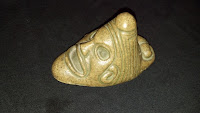 Recently, there have been a plethora of scandals concerning domestic violence, discrimination, and sexual harassment in the news. Each of these disturbing events seem to elicit responses by self-proclaimed ‘experts’ purporting to know how to solve problems of inequity and discrimination. This has led me to ask the question: If you have a tooth ache, do you tie a string around that tooth and tie the other end to a door knob and slam the door? NO! Do you go to a chiropractor or a cardiologist to have the tooth removed? NO! You go to someone who you are sure is an expert. You go to a licensed dentist. When it comes to EEO or diversity or inclusion (D&I), knowing who is really an expert is not as simple as going to Healthgrades.com and looking up a dentist’s education and licenses before getting that tooth pulled.
Recently, there have been a plethora of scandals concerning domestic violence, discrimination, and sexual harassment in the news. Each of these disturbing events seem to elicit responses by self-proclaimed ‘experts’ purporting to know how to solve problems of inequity and discrimination. This has led me to ask the question: If you have a tooth ache, do you tie a string around that tooth and tie the other end to a door knob and slam the door? NO! Do you go to a chiropractor or a cardiologist to have the tooth removed? NO! You go to someone who you are sure is an expert. You go to a licensed dentist. When it comes to EEO or diversity or inclusion (D&I), knowing who is really an expert is not as simple as going to Healthgrades.com and looking up a dentist’s education and licenses before getting that tooth pulled.
D&I/EEO is a multidisciplinary field with a few distinct points of entry such as employment law, human resources, and organizational psychology. The recent trend, however, is that people with degrees and experience in sales, marketing, communication, etc. are jumping on the D&I band wagon as the demand for diversity training increases. This is a perturbing development. In some cases, people are asked to become an organization’s diversity officer based on their being a member of a protected class: they may be people of color or women or members of the LGBT community or be differently-abled. They may be highly competent in the field in which they have spent their careers, but that does not make them experts in the complex field of diversity and inclusion.
Bona Fides
My professional experience in Equal Employment Opportunity began in 1988. In addition to my undergraduate and graduate education, I received formal training at Cornell’s School of International Labor Relations and in courses provided by the City of New York’s Department of Personnel in:
- conducting investigations of discrimination
- compiling and interpreting demographic statistics
- preparing affirmative action reports
- conflict resolution and mediation
- developing strategies to overcome historic perpetuation of discriminatory practices
- developing and facilitating adult education in EEO, Sexual Harassment Prevention, D&I, etc.
It took years of on-the-job experience augmented by this training before I was qualified to call myself an expert in my field.
Fake it ‘til You Make It!
Unfortunately, there are individuals who are willing to ‘stretch the truth’ and claim to have the requisite competencies and skills to create D&I strategies, education and initiatives. They may even believe that they have those competencies or that their area of expertise is so similar to D&I that they can ‘fake it ‘til they make it.’ Some of this is due to ‘coaches’ and self-help ‘gurus’ who are telling people that faking it is o-k even admirable, as it will advance their careers. I vehemently disagree!
When Passion Meets Purpose
I have been passionate about creating inclusion for as long as I can remember. As both a woman and person of mixed culture (my father was Puerto Rican and my mother was of Northern European descent), I have personally experienced discrimination and sexual harassment. I have also been defending those unable to defend themselves since the 1960s in the schoolyard of my elementary school in Astoria, NYC. Individuals with a true passion to end discrimination and increase diversity and inclusion in the workplace should get the specific education and experience that will qualify them as experts in this field. Those who do not bother to get their credentials can cause real damage to the employees who are in need of help and organizations that strive to become inclusive. I have been asked to repair some of this damage by more than one of my clients, and it is the most challenging work that I do.
To be continued…
Most people do not know what questions to ask potential consultants or employees for D&I engagements. I will address this in Part II.
Have you been asking what makes a D&I expert an expert? If not, isn’t it a great time to begin doing so?
Onward!
~ Wendy
Please let me know what you think in the comment section below or email me: we***@***************gy.com
Please follow us on Twitter for more frequent observations and information. 








